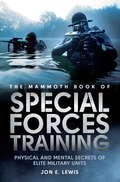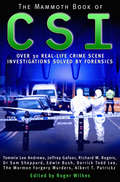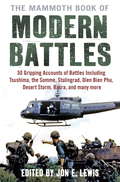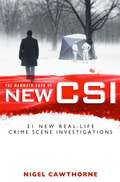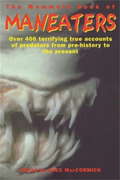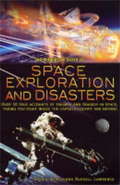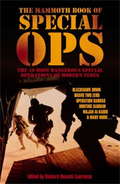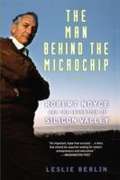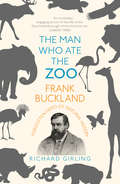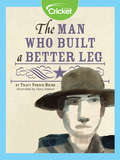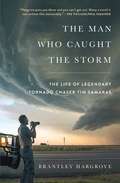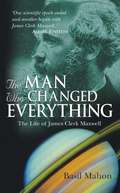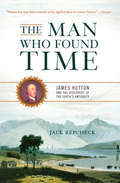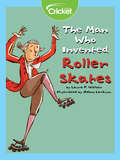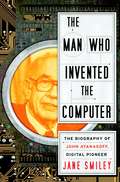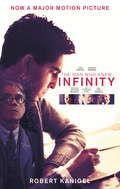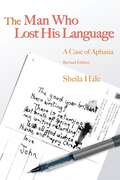- Table View
- List View
The Mammals of Luzon Island: Biogeography and Natural History of a Philippine Fauna
by Lawrence R. Heaney Danilo S. Balete Eric A. RickartA beautifully illustrated guide to the complete mammalian biodiversity of the Philippines’ largest island.Revealing the astounding mammalian diversity found on the largest Philippine island, The Mammals of Luzon Island is a unique book that functions both as a field guide and study of tropical fauna. The book features 120 fully illustrated species profiles and shows how the mammals fit into larger questions related to evolution, ecology, and biogeography. Luzon’s stunning variety of mammals includes giant fruit-eating bats; other bats so small that they can roost inside bamboo stems; giant plant-eating rodents that look like, but are not, squirrels; shrews that weigh less than half an ounce; the rapidly disappearing Philippine warty pig; and the long-tailed macaque, Luzon’s only nonhuman primate. While celebrating Luzon’s remarkably rich mammal fauna, the authors also suggest conservation strategies for the many species that are under threat from a variety of pressures. Based on a century of accumulated data and fifteen years of intensive study, The Mammals of Luzon Island delivers a message that will appeal equally to scientists, conservationists, and ecologically minded travelers.
The Mammoth Book Of Special Forces Training: Physical and Mental Secrets of Elite Military Units (Mammoth Books #388)
by Jon E. LewisIn this encyclopedic book, Lewis provides insights into the origins, training, tactics, weapons and achievements of special forces and special mission units throughout the world, focusing particularly on US and UK forces. He also looks at the codes that that bind the members of these elite units together. He reveals training secrets in everything from wilderness survival to hand-to-hand combat. In doing so, he draws extensively on biographies, autobiographies, training manuals, interviews and press coverage of key operations. The elite forces covered include: The British Army’s Special Air Service (SAS), established in 1950, which has served as a model for the special forces of many countries. Its counter-terrorist wing famously took part in the hostage rescue during the siege of the Iranian Embassy in London in 1980. The Parachute Regiment, the airborne infantry element of 16 Air Assault Brigade, which spearheads the British Army’s rapid intervention capability. It is closely linked to United Kingdom Special Forces. The US Navy’s SEALS (Sea, Air, Land Teams), trained to conduct special operations in any environment, but uniquely specialised and equipped to operate from and in the sea. Together with speedboat-operating Naval Special Warfare Combatant-Craft Crewmen, they form the operational arm of the Naval Special Warfare community, the Navy component of the US Special Operations Command. Their special operations include: neutralizing enemy forces; reconnaissance; counter-terrorism (famously in the killing of Osama bin Laden); and training allies. The US Army’s Delta Force: The Special Mission Unit, 1st Special Forces Operational Detachment-Delta (1st SFOD-D), known simply as Delta Force, the Army component of Joint Special Operations Command. Its role is counter-terrorism, direct action and national intervention operations, though it has the capability to conduct many different kinds of clandestine missions, including hostage rescues and raids. The US Army Rangers, a light infantry combat formation under the US Army Special Operation Command. The Green Berets – motto: ‘to free the oppressed’ – trained in languages, culture, diplomacy, psychological warfare and disinformation. Russia’s Spetsnaz, whose crack anti-terrorist commandos ended the Moscow theatre siege, and who have a reputation for being among the world’s toughest and most ruthless soldiers. Spetsnaz units saw extensive action in Afghanistan and Chechnya, often operating far behind enemy lines. Israeli Special Forces, especially Shayetet 13 (Flotilla 13), whose motto, in common with the rest of the Israeli military, is ‘Never again’, a reference to the Holocaust. They are particularly adept at the specifically Israeli martial art Krav Maga, which they dub ‘Jew-jitsu’.
The Mammoth Book of CSI: Over 30 Real-life Crime Scene Investigations Solved By Forensics (Mammoth Books #474)
by Roger WilkesUsing the latest modern technology available to forensic science, crime scene investigators answer questions others never even thought to ask. This book contains more than thirty fascinating modern cases of forensic detective work.Genetic fingerprinting, blood splatter analysis, laser ablation, toxicology, ballistics analysis - the whole range of forensic techniques is featured. The investigators trust only the evidence to speak for those who cannot speak for themselves: the victims. The cases featured include: - Tommie Lee Andrews, the first person to be convicted as a result of DNA evidence, for raping a woman during a burglary; - Jeffrey Gafoor, convicted of murder in 2003 when crime scene evidence collected twelve years previously resulted in a match with his nephew;- Richard W. Rogers, convicted of the murder of two of his numerous gay male victims, through vacuum metal deposition, technology which saves fingerprints from plastic bags;- Dr. Sam Sheppard, the murder trial based on blood evidence that inspired the TV series The Fugitive;- Edwin Bush, the first murderer in Britain to be brought to book thanks to an identikit picture;- Derrick Todd Lee, the Baton Rouge Serial Killer, only nailed by DNA evidence after a flawed FBI profile led big-shot investigators astray. These cases - usually successful, but also sometimes dangerously flawed - offer a remarkable insight into real-life scene-of-crime investigation.
The Mammoth Book of Combat: Reports From The Frontline (Mammoth Ser.)
by Jon E. LewisOver a hundred eyewitness accounts of the reality of combat from some of the finest writers of the last century and our own. Lucid, vivid, complex images of conflict, from Walt Whitman on the American Civil War to contemporary reporting from Afghanistan.The collection includes Martha Gellhorn on the Battle of the Bulge, Michael Herr at Khe Sanh, David Rohde's and Anthony Shadid's Pulitzer-winning accounts of Bosnia and Iraq respectively, Christina Lamb's famous account of being under fire from the Taliban, Robert Fisk on being attacked in Afghanistan, and Nicholas Tomalin's 'The General Goes Zapping Charlie Kong' (one of the inspirations for Apocalypse Now) among many other pieces of exceptional war reporting.
The Mammoth Book of Combat: Reports from the Frontline (Mammoth Books #368)
by Jon E. LewisOver a hundred eyewitness accounts of the reality of combat from some of the finest writers of the last century and our own. Lucid, vivid, complex images of conflict, from Walt Whitman on the American Civil War to contemporary reporting from Afghanistan.The collection includes Martha Gellhorn on the Battle of the Bulge, Michael Herr at Khe Sanh, David Rohde's and Anthony Shadid's Pulitzer-winning accounts of Bosnia and Iraq respectively, Christina Lamb's famous account of being under fire from the Taliban, Robert Fisk on being attacked in Afghanistan, and Nicholas Tomalin's 'The General Goes Zapping Charlie Kong' (one of the inspirations for Apocalypse Now) among many other pieces of exceptional war reporting.
The Mammoth Book of Modern Battles (Mammoth Books #381)
by Jon E. LewisFrom the start of the 20th century to the most recent major offensives, here are fifty accounts of the battles that made the modern world, described in superb detail by historians and writers including John Keegan, Alan Clark, John Strawson, Charles Mey, John Pimlott, and John Laffin.All the major conflicts are covered, from two world wars, through Korea, Vietnam, Bosnia, Chechnya, to Iraq and Afghanistan. Among the battles featured are: the Somme, Passchendaele, Battle of Britain, Stalingrad, El Alamein, Monte Cassino, Omaha Beach, Iwa Jima, Dien Bien Phu, Ia Drang, Hamburger Hill, Desert Storm, Kabul, Baghdad, and Basra.
The Mammoth Book of Modern Battles (Mammoth Books)
by Jon E. LewisFrom the start of the 20th century to the most recent major offensives, here are fifty accounts of the battles that made the modern world, described in superb detail by historians and writers including John Keegan, Alan Clark, John Strawson, Charles Mey, John Pimlott, and John Laffin.All the major conflicts are covered, from two world wars, through Korea, Vietnam, Bosnia, Chechnya, to Iraq and Afghanistan. Among the battles featured are: the Somme, Passchendaele, Battle of Britain, Stalingrad, El Alamein, Monte Cassino, Omaha Beach, Iwa Jima, Dien Bien Phu, Ia Drang, Hamburger Hill, Desert Storm, Kabul, Baghdad, and Basra.
The Mammoth Book of New CSI: Forensic science in over thirty real-life crime scene investigations (Mammoth Books #218)
by Nigel CawthorneDetailed accounts of over 30 contemporary cases, or older cases reopened as a result of advances in forensic science. Crime scene investigations draw on a wide range of cutting-edge technology including genetic fingerprinting, blood splatter analysis, laser ablation, toxicology and ballistics analysis. Cases covered here include: the abduction of Madeleine McCann; the vindication of Colin Stagg, convicted of having murdered Rachel Nickell; Hadden Clark who killed and ate a six-year-old child in Maryland; Robert Pickton, the Vancouver farmer who fed his female victims to his pigs; the murder of Meredith Kercher in Perugia (was Amanda Knox guilty?); Lindsay Hawker's gruesome death in Japan; Josef Fritzl and the cellar in which he imprisoned and raped his daughter.
The Mammoth Book of Predators
by Alex MacCormickDon't go into the woods today. . . If you're on a cruise, tramping through a forest or holidaying in an exotic location, you are constantly being watched - somewhere close by a creature is lurking, stalking and eyeing your every move. The variety and range of these potential predators is truly astonishing, from Asiatic wolves to rogue elephants, fire ants to sharks, snakes, crocodiles and grizzlies. In this definitive anthology survivors recall their terrifying ordeals, while hunters and other witnesses describe the final bloody moments of victims and their killers. Including:The British climber alone in the mountain wilderness pursued for days by a vengeful bearThe African traveller's unhappy encounter with a crocodileA member of the Royal Family's gory meeting with a shark in the CaribbeanA tiger breaking out of the jungle to grab a woman from her village
The Mammoth Book of Predators (Mammoth Books #396)
by Alex MacCormickDon't go into the woods today. . . If you're on a cruise, tramping through a forest or holidaying in an exotic location, you are constantly being watched - somewhere close by a creature is lurking, stalking and eyeing your every move. The variety and range of these potential predators is truly astonishing, from Asiatic wolves to rogue elephants, fire ants to sharks, snakes, crocodiles and grizzlies. In this definitive anthology survivors recall their terrifying ordeals, while hunters and other witnesses describe the final bloody moments of victims and their killers. Including:The British climber alone in the mountain wilderness pursued for days by a vengeful bearThe African traveller's unhappy encounter with a crocodileA member of the Royal Family's gory meeting with a shark in the CaribbeanA tiger breaking out of the jungle to grab a woman from her village
The Mammoth Book of Space Exploration and Disaster (Mammoth Books #358)
by Richard Russell LawrenceIn the words of those who trod the void and those at missioncontrol, here are over 50 of the greatest true stories of suborbital,orbital and deep-space exploration. From Apollo 8'sfirst view of a fractured, tortured landscape of craters on the'dark side' of the Moon to the series of cliff-hanger crisesaboard space station Mir, they include moments ofextraordinary heroic achievement as well as episodes of terriblehuman cost. Among the astronauts and cosmonauts featured areJohn Glenn, Pavel Beyayev, Jim Lovell, Neil Armstrong, BuzzAldrin, Valery Korzun, Vasily Tsibliyev and Michael Foale.Includes • First walk in space by Sergei Leonov and histraumatic return to Earth • Apollo 13's problem - the classic,nail-biting account of abandoning ship on the way to theMoon • Docking with the frozen, empty Salyut 7 space stationthat had drifted without power for eight months • Progresscrashes into Mir - the astronauts survive death by a hair'sbreadth • Jerry Linenger's panic attack during a space walk,'just out there dangling'.
The Mammoth Book of Space Exploration and Disaster: Over 50 True Accounts Of Triumph And Tragedy In Space, Taking You Right Inside The Capsule Cockpit And Beyond
by Richard Russell LawrenceIn the words of those who trod the void and those at missioncontrol, here are over 50 of the greatest true stories of suborbital,orbital and deep-space exploration. From Apollo 8'sfirst view of a fractured, tortured landscape of craters on the'dark side' of the Moon to the series of cliff-hanger crisesaboard space station Mir, they include moments ofextraordinary heroic achievement as well as episodes of terriblehuman cost. Among the astronauts and cosmonauts featured areJohn Glenn, Pavel Beyayev, Jim Lovell, Neil Armstrong, BuzzAldrin, Valery Korzun, Vasily Tsibliyev and Michael Foale.Includes ? First walk in space by Sergei Leonov and histraumatic return to Earth ? Apollo 13's problem - the classic,nail-biting account of abandoning ship on the way to theMoon ? Docking with the frozen, empty Salyut 7 space stationthat had drifted without power for eight months ? Progresscrashes into Mir - the astronauts survive death by a hair'sbreadth ? Jerry Linenger's panic attack during a space walk,'just out there dangling'.
The Mammoth Book of Special Ops
by Richard Russell LawrenceInto the eye of danger with the men who put the 'special' in special forcesThe once shadowy activities of special forces have grown into an increasingly exposed element of 21st century warfare and anti-terrorist activity. Here, in one giant unputdownable volume, are 30 of the most dangerous special operations of modern times.Drawn from the flashpoints of the world, and above all Iraq and Afghanistan, these first-hand and reported accounts of missions by the SAS, Delta Force, Green Beret, Commandos and other forces will leave you on the edge of your seat.The accounts include:? Blackhawk Down - the US Delta forces debacle in Mogadishu, Somalia, 1993? British Special forces fight Al Qaeda at close quarters in Afghanistan 2003? Task Force Raider - US Special forces teams track down Saddam Hussein, 2003? The British 'Blackhawk Down' - Paras shoot their way out of trouble in Majar, Iraq 2003? The capture of insurgent leader Chemical Evil Fat Mama, Fallujah, November 2003
The Mammoth Book of Special Ops (Mammoth Books #359)
by Richard Russell LawrenceInto the eye of danger with the men who put the 'special' in special forcesThe once shadowy activities of special forces have grown into an increasingly exposed element of 21st century warfare and anti-terrorist activity. Here, in one giant unputdownable volume, are 30 of the most dangerous special operations of modern times.Drawn from the flashpoints of the world, and above all Iraq and Afghanistan, these first-hand and reported accounts of missions by the SAS, Delta Force, Green Beret, Commandos and other forces will leave you on the edge of your seat.The accounts include: Blackhawk Down - the US Delta forces debacle in Mogadishu, Somalia, 1993 British Special forces fight Al Qaeda at close quarters in Afghanistan 2003 Task Force Raider - US Special forces teams track down Saddam Hussein, 2003 The British 'Blackhawk Down' - Paras shoot their way out of trouble in Majar, Iraq 2003 The capture of insurgent leader Chemical Evil Fat Mama, Fallujah, November 2003
The Man Behind The Microchip: Robert Noyce And The Invention Of Silicon Valley
by Leslie BerlinHailed as the Thomas Edison and Henry Ford of Silicon Valley, Robert Noyce was a brilliant inventor, a leading entrepreneur, and a daring risk taker who piloted his own jets and skied mountains accessible only by helicopter. Now, in The Man Behind the Microchip, Leslie Berlin captures not only this colorful individual but also the vibrant interplay of technology, business, money, politics, and culture that defines Silicon Valley. Here is the life of a high-tech industry giant. The co-founder of Fairchild Semiconductor and Intel, Noyce co-invented the integrated circuit, the electronic heart of every modern computer, automobile, cellular telephone, advanced weapon, and video game. With access to never-before-seen documents, Berlin paints a fascinating portrait of Noyce: an ambitious and intensely competitive multimillionaire who exuded a "just folks" sort of charm, a Midwestern preacher's son who rejected organized religion but would counsel his employees to "go off and do something wonderful," a man who never looked back and sometimes paid a price for it. In addition, this vivid narrative sheds light on Noyce's friends and associates, including some of the best-known managers, venture capitalists, and creative minds in Silicon Valley. Berlin draws upon interviews with dozens of key players in modern American business--including Andy Grove, Steve Jobs, Gordon Moore, and Warren Buffett; their recollections of Noyce give readers a privileged, first-hand look inside the dynamic world of high-tech entrepreneurship. A modern American success story, The Man Behind the Microchip illuminates the triumphs and setbacks of one of the most important inventors and entrepreneurs of our time.
The Man Who Ate the Zoo: Frank Buckland, forgotten hero of natural history
by Richard GirlingFrank Buckland was an extraordinary man – surgeon, natural historian, popular lecturer, bestselling writer, museum curator, and a conservationist before the concept even existed. Eccentric, revolutionary, prolific, he was one of the nineteenth century’s most improbable geniuses. His lifelong passion was to discover new ways to feed the hungry. Rhinoceros, crocodile, puppy-dog, giraffe, kangaroo, bear and panther all had their chance to impress, but what finally - and, eventually, fatally - obsessed him was fish. Forgotten now, he was one of the most original, far-sighted and influential natural scientists of his time, held as high in public esteem as his great philosophical enemy, Charles Darwin.
The Man Who Built a Better Leg
by Tracy Vonder BrinkInjured by a cannonball, James Edward Hanger was the first amputee of the Civil War. Determined to find a better solution than a peg leg, he worked to develop his own artificial limb company. He even continued working past retirement, providing Hanger Limbs for victims of World War I.
The Man Who Caught the Storm: The Life of Legendary Tornado Chaser Tim Samaras
by Brantley Hargrove“An instant classic of Americana—a story of tragedy, invention, lore, science, and a most original kind of genius.” —Hampton Sides “Masterful. This is what man versus nature is all about.” —Skip Hollandsworth The Man Who Caught the Storm is the saga of the greatest tornado chaser who ever lived: a tale of obsession and daring, and an extraordinary account of humanity’s high-stakes race to understand nature’s fiercest phenomenon.At the turn of the twenty-first century, the tornado was one of the last true mysteries of the modern world. It was a monster that ravaged the American heartland a thousand times each year, yet science’s every effort to divine its inner workings had ended in failure. Researchers all but gave up, until the arrival of an outsider. In a field of PhDs, Tim Samaras didn’t attend a day of college in his life. He chased storms with brilliant tools of his own invention and pushed closer to the tornado than anyone else ever dared. When he achieved what meteorologists had deemed impossible, it was as if he had snatched the fire of the gods. Yet even as he transformed the field, Samaras kept on pushing. As his ambitions grew, so did the risks. And when he finally met his match—in a faceoff against the largest tornado ever recorded—it upended everything he thought he knew. Brantley Hargrove delivers a masterful tale, chronicling the life of Tim Samaras in all its triumph and tragedy. He takes readers inside the thrill of the chase, the captivating science of tornadoes, and the remarkable character of a man who walked the line between life and death in pursuit of knowledge. Following the tradition of Into Thin Air and The Perfect Storm, Hargrove’s debut offers an unforgettable exploration of obsession and the extremes of the natural world.
The Man Who Changed Everything
by Basil MahonThis is the first biography in twenty years of James Clerk Maxwell, one of the greatest scientists of our time and yet a man relatively unknown to the wider public. Approaching science with a freshness unbound by convention or previous expectations, he produced some of the most original scientific thinking of the nineteenth century -- and his discoveries went on to shape the twentieth century.
The Man Who Deciphered Linear B: The Story of Michael Ventris
by Andrew Robinson"Highly readable . . . a fitting tribute to the quiet outsider who taught the professionals their business and increased our knowledge of the human past."--Archaeology Odyssey More than a century ago, in 1900, one of the great archaeological finds of all time was made in Crete. Arthur Evans discovered what he believed was the palace of King Minos, with its notorious labyrinth, home of the Minotaur. As a result, Evans became obsessed with one of the epic intellectual stories of the modern era: the search for the meaning of Linear B, the mysterious script found on clay tablets in the ruined palace. Evans died without achieving his objective, and it was left to the enigmatic Michael Ventris to crack the code in 1952. This is the first book to tell not just the story of Linear B but also that of the young man who deciphered it. Based on hundreds of unpublished letters, interviews with survivors, and other primary sources, Andrew Robinson's riveting account takes the reader through the life of this intriguing and contradictory man. Stage by stage, we see how Ventris finally achieved the breakthrough that revealed Linear B as the earliest comprehensible European writing system.
The Man Who Found Time: James Hutton And The Discovery Of Earth's Antiquity
by Jack RepcheckThere are three men whose life’s work helped free science from the strait-jacket of religion. Two of the three-Nicolaus Copernicus and Charles Darwin-are widely heralded for their breakthroughs. The third, James Hutton, is comparatively unknown, yet he profoundly changed our understanding of the earth, its age, and its dynamic forces. A Scottish gentleman farmer, Hutton’s observations on his small tract of land led him to a theory that directly contradicted biblical claims that the Earth was only 6,000 years old. This expertly crafted narrative tells the story not only of Hutton, but also of Scotland and the Scottish Enlightenment, including many of the greatest thinkers of the age, such as David Hume and Adam Smith.
The Man Who Invented Roller Skates
by Laura F. NielsenRegarded as a mechanical genius, John Joseph Merlin is sadly remembered most for a party at the Carlisle House, where he careened into the hostesses' plate glass mirror, wearing his newly invented roller skates, and playing the violin.
The Man Who Invented the Computer
by Jane SmileyFrom one of our most acclaimed novelists, a David-and-Goliath biography for the digital age.One night in the late 1930s, in a bar on the Illinois-Iowa border, John Vincent Atanasoff, a professor of physics at Iowa State University, after a frustrating day performing tedious mathematical calculations in his lab, hit on the idea that the binary number system and electronic switches, combined with an array of capacitors on a moving drum to serve as memory, could yield a computing machine that would make his life and the lives of other similarly burdened scientists easier. Then he went back and built the machine. It worked. The whole world changed. Why don't we know the name of John Atanasoff as well as we know those of Alan Turing and John von Neumann? Because he never patented the device, and because the developers of the far-better-known ENIAC almost certainly stole critical ideas from him. But in 1973 a court declared that the patent on that Sperry Rand device was invalid, opening the intellectual property gates to the computer revolution. Jane Smiley tells the quintessentially American story of the child of immigrants John Atanasoff with technical clarity and narrative drive, making the race to develop digital computing as gripping as a real-life techno-thriller.From the Hardcover edition.
The Man Who Knew Infinity: A Life of the Genius Ramanujan
by Robert KanigelThe Man Who Knew Infinity is the true story of a friendship between Srinivasa Ramanujan and G.H. Hardy that forever changed mathematics. In 1913, a young unschooled Indian clerk wrote a letter to G H Hardy, begging the pre-eminent English mathematician's opinion on several ideas he had about numbers. Realising the letter was the work of a genius, Hardy arranged for Srinivasa Ramanujan to come to England. Thus began one of the most improbable and productive collaborations ever chronicled.With a passion for rich and evocative detail, Robert Kanigel takes us from the temples and slums of Madras to the courts and chapels of Cambridge University, where the devout Hindu Ramanujan, 'the Prince of Intuition,' tested his brilliant theories alongside the sophisticated and eccentric Hardy, 'the Apostle of Proof'. In time, Ramanujan's creative intensity took its toll: he died at the age of thirty-two and left behind a magical and inspired legacy that is still being plumbed for its secrets today.
The Man Who Lost his Language: A Case of Aphasia Revised Edition
by Sheila HaleThe Man who Lost His Language is a unique exploration of aphasia - losing the ability to use or comprehend words - as well as of the resilience of love. When Sir John Hale suffered a stroke that left him unable to walk, write or speak, his wife, Shelia, followed every available medical trail seeking knowledge of his condition and how he might be restored to health. This revised edition of a classic book includes an additional chapter detailing the latest developments in science and medicine since the first edition was published. This personal account of one couple's experience will be of interest to all those who want to know more about aphasia and related conditions.

